
3D design and game design
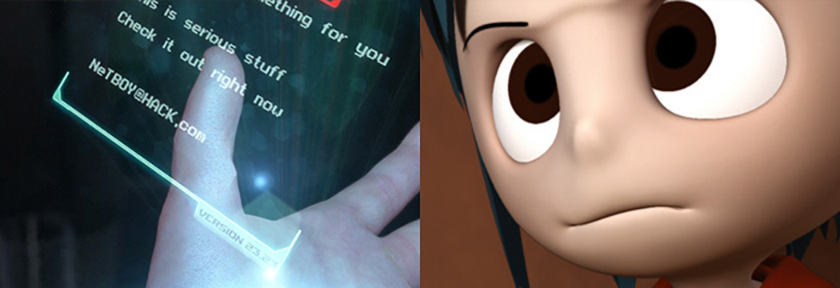
Nowadays, three-dimensional visualizations and animations are standard in a wide range of fields, from the illustration of complex content through CGI, VFX and animated film to game design. Professional skills in the field of 3D will open up an expanding job market to you, the rapidly growing games sector being just one example. Even in the field of web design, three-dimensional content has become standard thanks to WebGL.
To achieve excellent results, students need to be familiar with professional software (we mainly use the node-based program Maya, along with, for example, Blender and Cinema4D), as well as being able to come up with creative ideas for content. This is why we also do a lot of work on character and story development, in addition to interior design, both from an architectural and a sociological point of view. Most of our work on 3D content is done in a team. The numerous prizes and awards we have won clearly show the high regard in which our work is held, both at the university and further afield.
Contact | |
Phone: | +49 821 5586-3419 |
Advertising Design
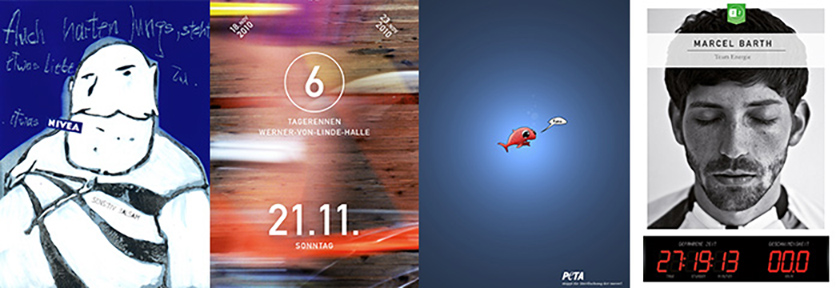
Good advertising is a rare thing. Good advertising challenges norms. Good advertising does not irritate those who see it, but instead touches them and makes them happy. Good advertising is persuasive. Good advertising is superbly designed, down to the last detail. But how is good advertising created?
VISUALIZE THE WHOLE PICTURE. Develop central ideas and strategies that are media-neutral, so that they can be transferred to a wide range of communication routes.
HAVE A CLEAR FOCUS. Have the courage to reduce. No individual designer needs to know how to do everything. Although advertising makes use of the whole range of available media, it is more practical and more effective to concentrate on just a couple of types of media when bringing an idea to fruition, and to do so in greater depth.
COLLABORATE. Advertising is a team sport. The large, multi-media campaigns are always created by teams with a range of different specializations, usually from several different agencies.
This approach forms the basis of the “Advertising Design” courses. You will learn how to develop media-neutral conceptual designs for social or commercial purposes. You will work both alone and in a team. You will learn creativity techniques and strategies for brainstorming. You will design posters, advertisements, commercials, ads for magazines and websites, for all current methods of communication and for those still to be invented.
Contact | |
Phone: | +49 821 5586-4022 |
Photography
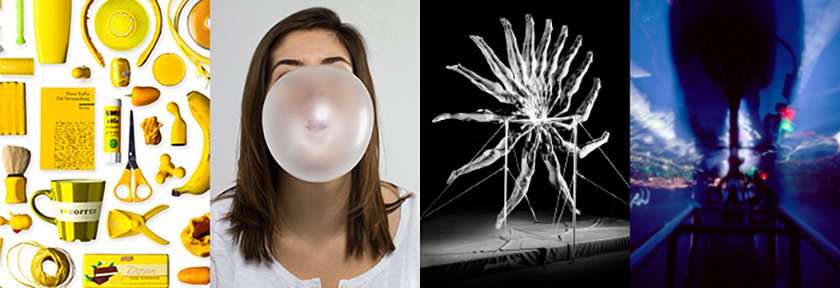
The photography courses are not about consolidating your photography skills, which will already be quite advanced. Instead, you will work on developing your visual powers of expression and integrating photography centered on particular themes into complex, image-dominated applications. The idea is to explore new worlds of photographic images located between landscape photography and advertising, people and stills, architecture and nudes, broadcasting and staging, street photography and fashion, pinhole and digital cameras, and so on.
In practice, this initially means examining, discussing and compiling several promising photo “projects”. Students also have the option of suggesting their own topics, or developing completely different topics from those originally envisaged. Then, as a group, you will choose ONE of the suggested topics to work on for that semester. In the following phase, you will first work in small groups, where you will develop an individual design concept and then set out to find your own exciting visual language. The point is to INVENT NEW PICTURES and methods of expression as part of your own personal visions and design concepts. This means that our joint approach will be to create the kind of photographic work (in image and text) that that has the power to surprise the beholder, while meeting the requirements of your degree program and the expectations of the market (agencies, designers, publishing houses etc). The work will be courageous, because it does not conform to the usual expectations and, in a positive sense, it will have a lasting effect.
Product - Design - Impact
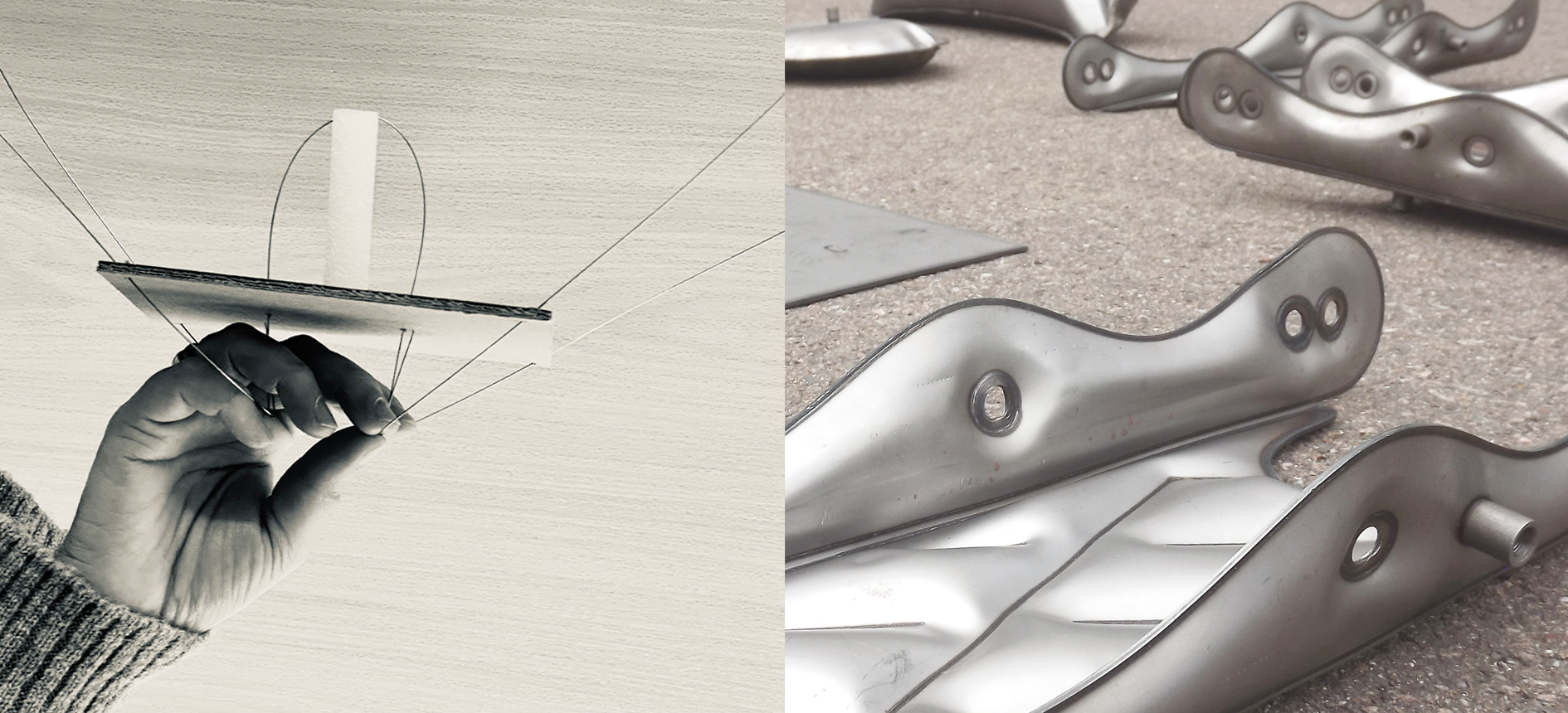
Products possess a multitude of characteristics. They embody past processes of production, collaboration, and resource use, as well as societal values and specific functional relationships. Their effects reach far into the future—sometimes intentional and desirable, sometimes unintended and coincidental. The actions, interactions, and contexts they evoke form a central concern of design: the search for viable ways of living and meaningful forms of existence.
Design is a systemic and cooperative process of continuous envisioning, experimenting, testing, and evaluating—a process that involves the ongoing revision of objectives, methods, and attitudes. In retrospect, sustainable states that contribute to the common good and the future of our planet are often not the outcome of large-scale planning, but rather of the favorable interplay of multiple, interdependent factors.
Within the field of Design – Product – Impact, such processes are explored and systematized through concrete experimental projects and materialized in prototypes. These endeavors intentionally provoke desirable outcomes—through collaboration with actors from politics, industry, and civil society.
Contact | |
Phone: | +49 821 5586-2951 |
Identity Design
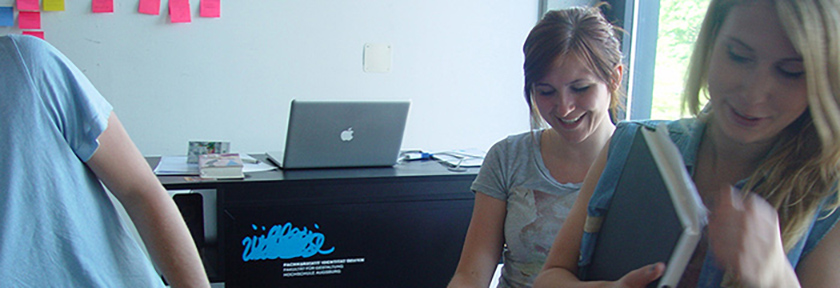
From politicians to pop stars, industrial enterprises to indie labels, theaters to animal protection societies, book publishers to stock exchanges, television shows to football clubs – what they have in common is the desire to be noticed. In today’s information-saturated media society, how is it possible to communicate a perception of a group’s collective identity, be it an organization, an institution, a company, a district or a state? What does “identity” mean to the people that are part of this group? How does their affiliation with this particular group manifest itself? We set out to discover ideas, images and stories that create an identity, presenting them in a way that is truly memorable. By means of practical and experimental project assignments, along with tutorials and discussions on the theory behind this subject, you will learn the techniques, instruments and methods of brand communication. This know-how will qualify you for jobs in a wide range of communication disciplines. You will also come into contact with both national and international design agencies, companies and universities, which will provide you with yet more new perspectives of this field.
Contact | |
Phone: | +49 160 97940582 |
Illustration
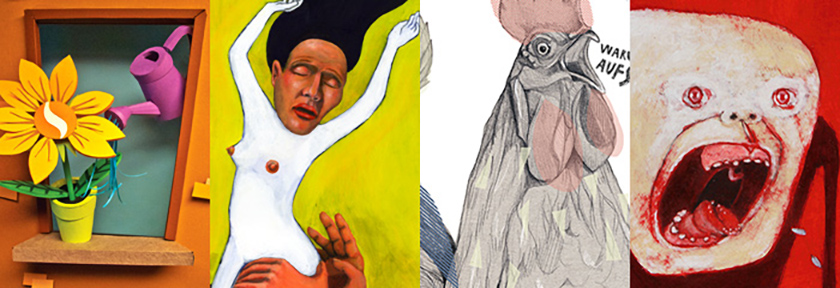
Illustration is an interface between art and design, with a wide range of applications: instruction manuals, book covers, product packaging, signage, magazines, character design, comics, storyboards, cartoons and poster design. It is used as a fundamental element for conveying ideas in all fields of communication design. This specialized class in illustration deals with the fundamental problems of illustrative design: the generation of ideas for images, the most effective way to present them and their subsequent conversion to a continuous, independent visual language. This is achieved both through a hands-on exploration of different materials and by working on the realistic conceptual design of different series of illustrations covering a range of given topics.
Students also explore the connections between illustration and typography, photography and audio-visual media. This class is to be regarded as a studio. The contents of the course are applied and expanded through project work that is based on practical requirements. There is also the option of working on “Strichnin”, an ongoing comic book project. This is, however, not obligatory, as the “Illustration” class is intended to create space for students to further develop their individual interests.
Contact | |
Phone: | +49 821 5586-3418 |
Information Design
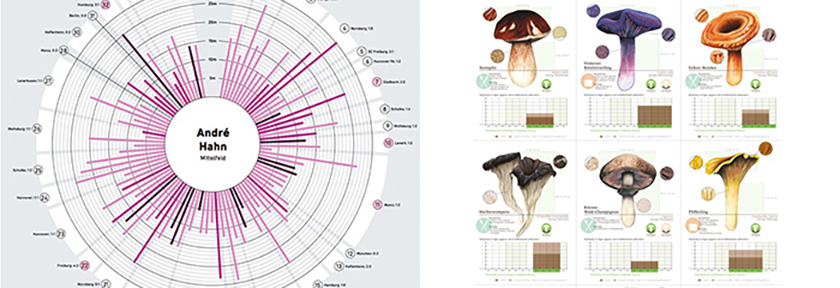
The term “information design” describes design processes and their results, which aim to enable the user to acquire economic knowledge and lasting insights. The role of information design is to translate information that is complex, abstract or otherwise difficult to access into clear visual representations: as static illustrative infographics or as interactive data visualizations.
Information designers research, plan, conceptualize and design these explanatory images, e.g. in the form of innovative wayfinding systems, illustrative infographics and data visualizations for news media, publishing houses or companies, instruction manuals or signage and reference systems. Information designers think analytically and design innovatively. They know the fundamental theories, principles and methods of information design and combine visual forms of representation using a wide range of media to create factual, numerical and cartographical graphics. They are equally familiar with the diverse history of information design as they are with current trends and developments, relevant players, tools, publications and exhibitions.
Information Design in the Faculty of Design at Augsburg UAS focuses on the practical subject areas of media, science, business, medicine and sport. We keep up-to-date with the latest interdisciplinary projects and academic discourse with our partners in industry, research and at other universities, both in Germany and around the world. As it is fact-based and required a high level of communication skills, information design is a specialized field with outstanding career opportunities.
Interdisciplinary Design
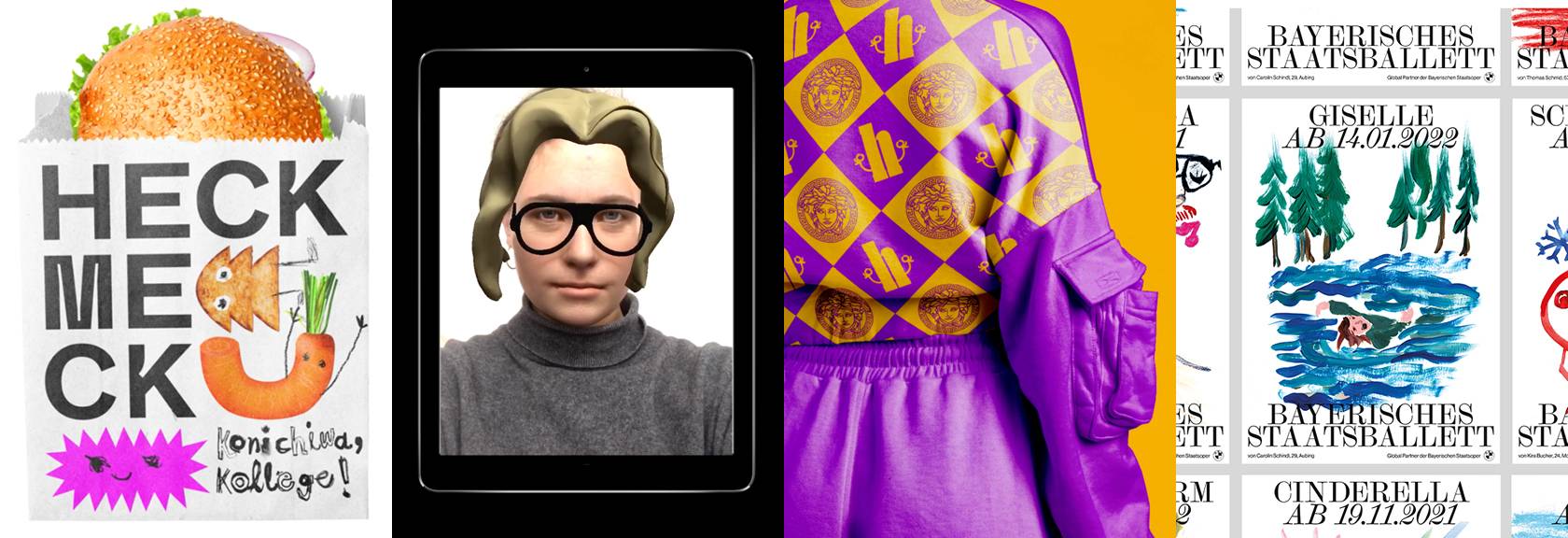
The work of a communication designer has changed considerably over the last 20 years. Their fields of activity now range from packaging design to social media campaigns, from event design to change management consulting. If designers want to become creative directors of intermedia (design) processes, they will need to be confident in their expertise on a number of different platforms. Therefore it is extremely important that they do not restrict themselves to just one medium, but instead cultivate a way of thinking and working that enables them to find a suitable answer to all questions about communication. The objective is to transform a thought into an appropriate form – it goes without saying that the end result should look good, too. In our design projects, I want to work out concepts with you and experiment with different forms of communication (and it doesn’t matter if our ideas don’t always work out). We will practice design in workshops, get to know interesting people and institutions, and bring practical projects to fruition.
Contact | |
Phone: | +49 821 5586-3408 |
Participatory Design
Physical Human-Machine Interfaces
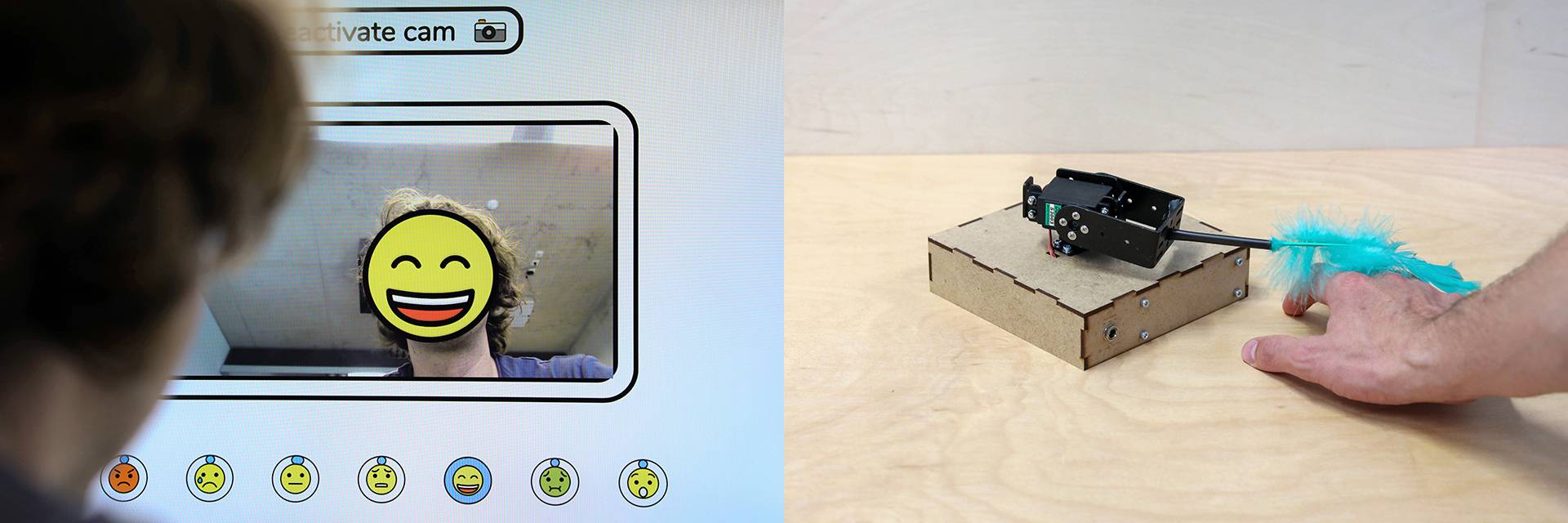
Nowadays, we are surrounded by interfaces: they have become our constant companions, in the physical space around us, in front of our faces, in our hands, on our nose, in our pockets and under our skin. We touch them and they touch us. Or annoy us. Interfaces mean that we are permanently linked (as they are with us), and we use them to communicate with systems, services, brands and people. Good interfaces mean a good quality of life. Our task as interface designers is therefore to find ways to communicate responsibly between systems and people. We focus on the special creative and aesthetic features of software and hardware, researching them through experiments and prototypes. We shape and link content to interfaces, and study structures, classification systems, information design and information architecture and resonance (visual, aural, tactile).
Main topic areas: information design, computational design, visual design on the computer screen, interaction design.
Contact | |
Phone: | +49 821 5586-3641 |
Interface Design
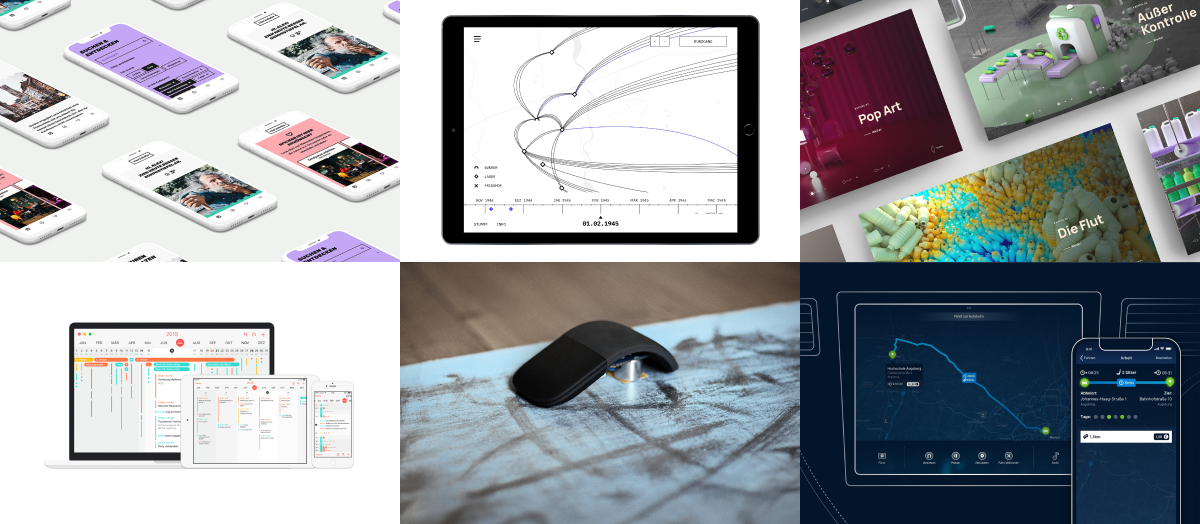
Interfaces surround us and are our constant companions: in physical space, in front of our face, in our hand, on our nose, in our pocket and under our skin. We touch them, they touch us. Or disturb us. We are permanently networked through interfaces and use them to communicate with systems, services, brands and people. Good interfaces are quality of life. Our job as interface designers is therefore to mediate responsibly between systems and people.
In this specialised field, we deal with the design and aesthetic characteristics of interactive electronic systems and research these through experiments and prototypes. We shape and network data and content into interfaces and deal with information and interaction design.
Contact | |
Phone: | +49 821 5586-3400 |
Artistic Design
Mixed Reality and Usability
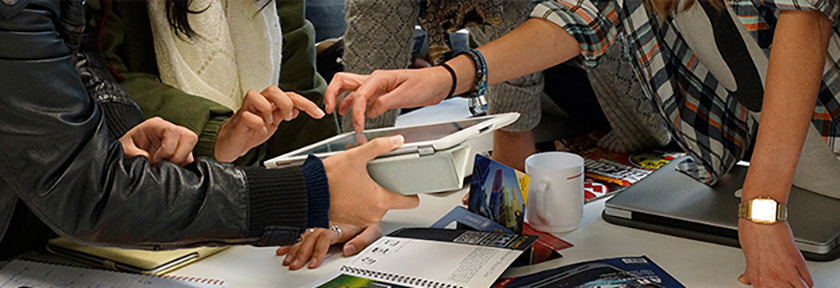
mixed reality & usability
combines innovative technology
with creative concepts and integral design.
Special attention is given to the interrelations between
digital content and the physical world.
- mixed reality objects
- location based applications
- Human Computer Interface (Usability)
Cooperations with external partners are common practice.
Lettering
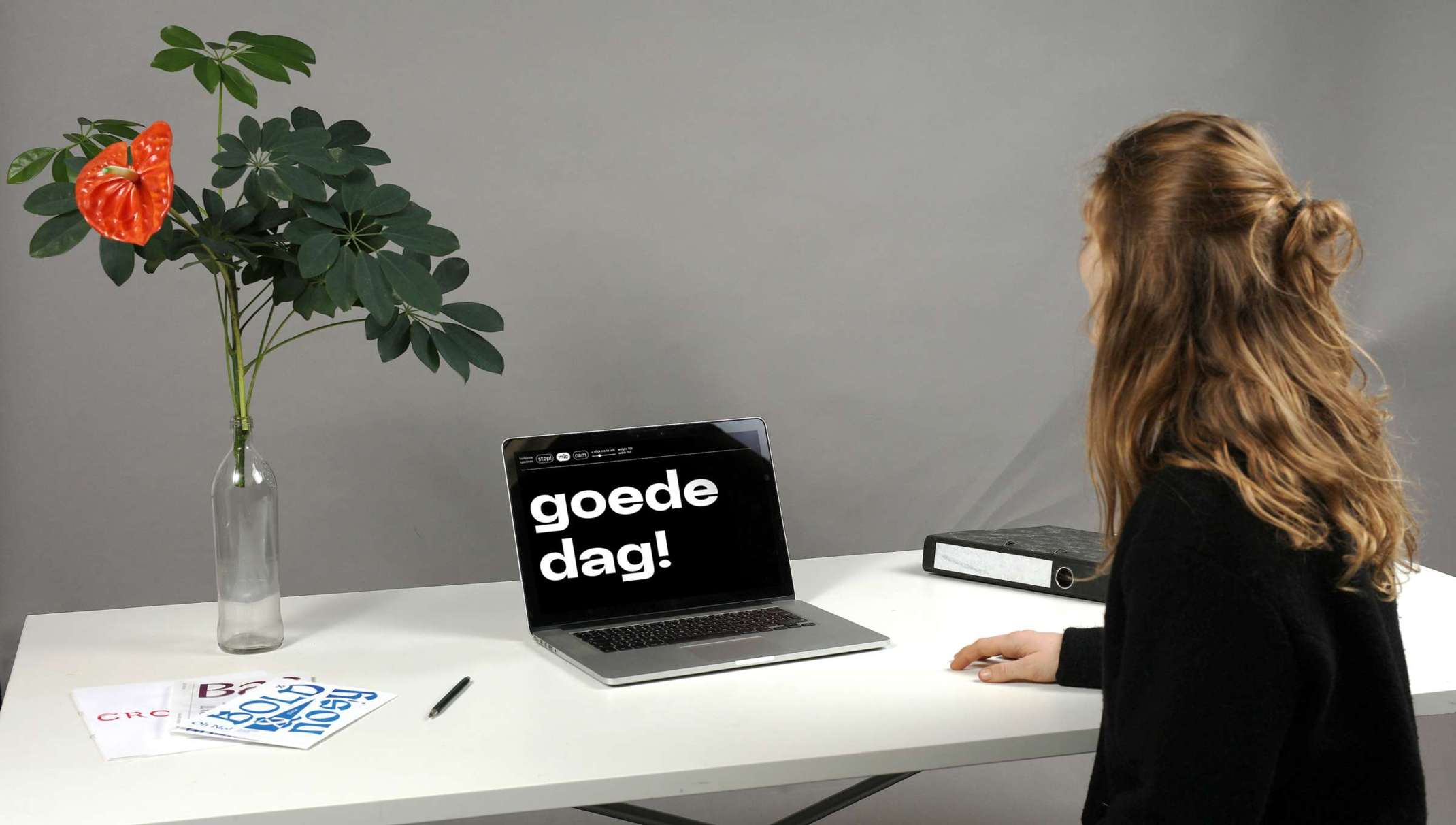
Lettering either stands alone or is inserted next to pictures and illustrations; it generally has a high level of function. This means that, for the best long-term career prospects, communication designers should have a feeling for different shapes and extensive knowledge of lettering. This expertise should also be transferable to other design disciplines, an aspect that will be dealt with as part of this specialized class. In addition to this, drawing, tracing shapes and free calligraphy are used to establish an affinity for art, as a communication designer without this affinity is lacking something vital.
Experience shows that the most flexible, confident designers have a good level of proficiency in various design processes combined with knowledge and skills in the fields of lettering and shapes. As well as examining the whole process of design, the course focuses on signs/logos, pictograms, corporate fonts and graphic design. At the same time, the artistic segment gives students an opportunity to experiment (free calligraphy, animated lettering), allowing them to discover more options for communication design. To round off the course, students learn the essential basics of lettering and fonts. Students are also given the opportunity to digitalize fonts that they have designed themselves.
Contact | |
Phone: | +49 821 5586-3417 |
Text Composition
What is the best way to write texts that people will want to read? How can we play with sentences and make words persuasive? And which rules of written communication still apply today? Under the succinct heading “Text”, the faculty offers courses that deal with these questions in three stages. First there is an introduction to the fundamentals of good writing style. Students gain confidence in their style of writing and learn to recognize areas in which the boundaries can be fluid: between art and kitsch, between cliché and linguistic dexterity. Then comes a phase of creative writing, i.e. experimentation with letters, words and sentences. The objective is to enable the students to experience writing in new ways, without restrictions.
The last stage of the “Text” course is learning to produce writing that is media-compatible, in the right format and meets the requirements of the assignment. This could consist of short journalistic articles or teasers for an online text, advertising copy or headlines. In each case, these texts should reach and appeal to their audience. Good texts take a lot of work: the writer Marie von Ebner-Eschenbach knew what she was talking about when she said: “Nobody can write like a god unless they have suffered like a dog.”
Contact | |
Phone: | +49 821 5586-3638 |
Contact | |
Phone: | +49 821 5586-3449 |
Typography
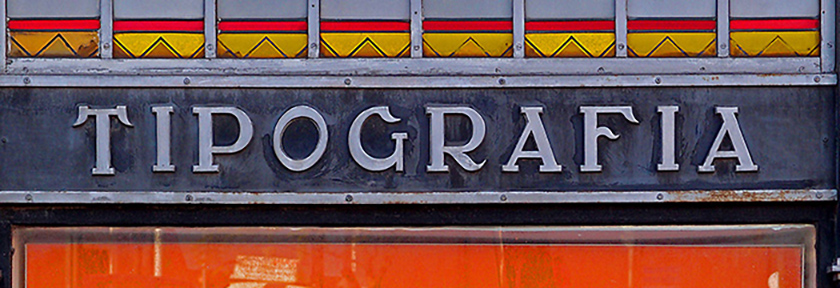
Typography is one of the fundamentals of visual design. It has two dimensions: “making something legible” and “making something visible”. In other words, it gives texts structure, while at the same time making the thoughts and images that are “behind the text” visible. Typography is closely linked to text and language, which is its “informative” side. However, it is also surface design and composition, and can come in the form of images – in this case, it activates and presents its message.
Good typography asks about content and function, it works conceptually and systematically. Advanced typographical design poses these questions: How can the highest level of legibility be achieved? What is the most functional rendition of a text and what would be the most active? How can we go about creating good text-image design and good layout? Which of the 100,000 available fonts is the most suitable; is there “one ideal” one? Good typography experiments constantly in order to find new solutions, asking which styles of typography exist and trying to go one better.
In the advanced part of the course, we do more in-depth typographical work as part of different design projects, wherever possible projects assigned by customers or competitions, using a wide range of applications. The main focus is on book design and book art, magazine and brochure design. This means the topics and projects can be anything from advertisement and poster design to packaging or exhibition design. It goes without saying that typography can also be explored through signage and information systems, in interiors, on screens and in moving images.
Contact | |
Phone: | +49 821 5586-3409 |
Time Based Media
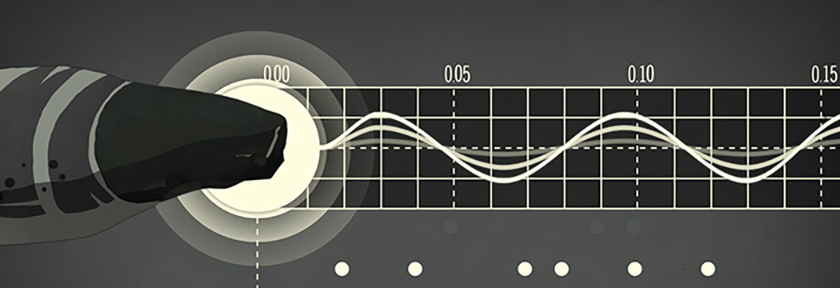
Animation in all of its forms – from cut-out animation to real-time systems. The increasing convergence of audio-visual media has opened up our field of work considerably. We are not interested in the boundaries between art, music and design, but rather in the links and transitions between them. We design in the fourth dimension – we design time.
Story-telling, whether concrete or abstract, requires the development of dramaturgy. The storyboard is our most important instrument of design here. In this specialized class, we work both conceptually and experimentally, but always remain focused on the result we wish to achieve. Professional structures are developed for each project: students organize their own teams, in which everyone has an area of responsibility, enabling us to complete demanding projects. In this way, we develop the ability to execute projects independently, from the conceptual design to the finished product; in other words, to produce and successfully release animation films and short movies, TV and film design, music videos and advertising clips.
Contact | |
Phone: | +49 821 5586-3427 |


